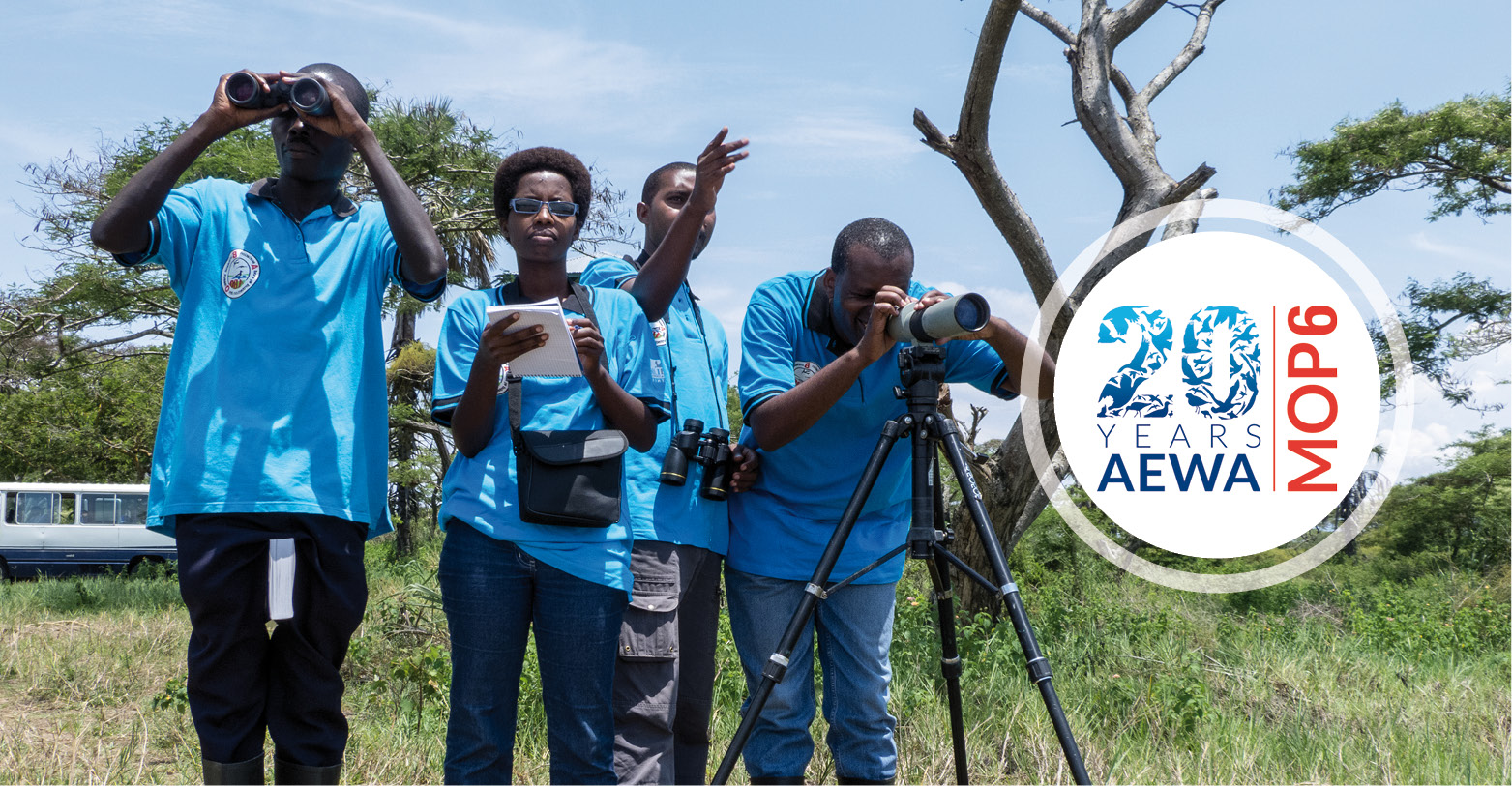The Importance of Monitoring Migratory Waterbirds

© Szabolcs Nagy
Funding Required to Close Gaps and Improve Conservation
Bonn, 13 November 2015 - Waterbird monitoring is an essential tool to implement the Agreement. Monitoring allows species to be prioritized for action more effectively and therefore limited resources can be better targeted on conservation. However, the capacity on site is insufficient for adequate monitoring in the Agreement area. The Report on the Development of Waterbird Monitoring along the African-Eurasian Flyways compiled by Wetlands International and the UNEP/AEWA Secretariat reviews progress made by the African-Eurasian Waterbird Monitoring Partnership over the last three years. The Partnership is a coalition of more than 80 organizations involved in waterbird monitoring and management.
The number of populations whose status could be analysed based on monitoring data has increased by 75 per cent. The International Waterbird Census (IWC), the EU Birds Directive and the European Red List of Birds projects contributed to 36 per cent of the AEWA populations being assessed based on regular monitoring data.
Technical improvements such as the modification of the online data gathering portal (www.observado.org) helped cater for the needs of national schemes that cannot afford to develop their own online database. Also, a new global online IWC database allows national coordinators to upload, download and share their data directly, which will accelerate data-flow in the future. Scientific reports dealt with the effectiveness of protected areas and indicators in response to range shifts caused by climate change.
Five major projects were implemented by the African-Eurasian Waterbird Monitoring Partnership to strengthen national waterbird monitoring conservation schemes. The majority of the support available was given to West Africa and the Mediterranean and more limited support could be provided to Eastern Europe, Central Asia and East Africa.
Yet more waterbird monitoring activities across the flyway are needed for “mobilize and cure information” for the AEWA Conservation Status Reports. The 6th edition of the AEWA Conservation Status Report shows that only about one third of the status assessment of the AEWA populations are based on monitoring.
While network and capacity development could be enhanced since MOP5 in 2012, no long-term funding could be secured to support low-income countries and flyway-level coordination. The Report has therefore issued recommendations to address the problem.
The first is to create a Waterbird Monitoring Fund under AEWA and invite voluntary contributions from donor Parties to support low-income countries in monitoring the internationally important sites on their territory. AEWA Parties and other stakeholders could incorporate waterbird monitoring into the twinning schemes to be established in accordance with Resolution 5.20 or other flyway-related programmes.
Flyway coordinators are invited to identify funding needs and inform Contracting Parties and other stakeholders about gaps to be filled annually. Funds could also be raised from other sources. The Waterbird Monitoring Partnership should raise funds for waterbird monitoring and other AEWA-related activities primarily from the private and corporate sector. In addition, AEWA Parties, non-governmental organizations and other organizations are invited to use the World Migratory Bird Day events as fundraising opportunities.
The recommendations are laid out in the Draft Resolution DR3 “Strengthening Monitoring of Migratory Waterbirds”, which will be submitted to MOP6 for adoption.
Last updated on 24 November 2015


